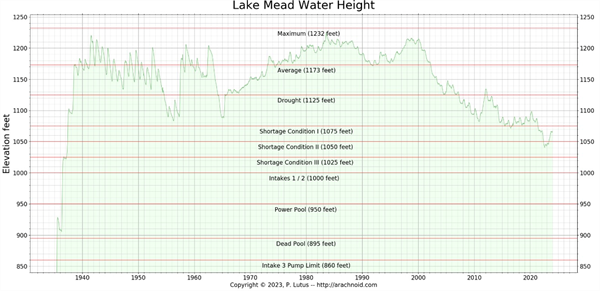-
Dec 15, 2021Review of Pest Pressure on Fall Produce and Melon Crops, 2021
Each produce season is unique, and this fall was no different in terms of insect pressure. A quick look at both recent and historic data on pest abundance recorded from our University of Arizona research plots and areawide trapping and sampling suggests that insect pressure was unusual for several pests. For a look at the data see Pest Abundance on Desert Produce and Melon Cops in Fall 2021.
Whitefly/CYSDV: Whitefly populations in fall melons were similar to the past few seasons, and areawide, adult movement was below average. However, CYSDV incidence in cantaloupe fields was higher than we’ve seen in the past 8 years. The virus incidence at harvest in more than half of commercial blocks had very high incidence (>80%) of both CYSDV and CCYV, particularly in the Tacna Roll areas. Incidence had little to do with weather or poor insect management, rather these infected field were located 1-10 miles downwind of about 300 acres of abandoned watermelons which were highly infested with whiteflies and viruses. Given the monsoon activity occurring in these areas during stand establishment in Aug, it was the “perfect storm” for what occurred. Other melon fields far removed from the watermelons experienced much less virus.
Beet armyworm (BAW), cabbage looper (CL), and corn earworm (CEW): BAW and CL pressure in the early fall was very high, although not to the levels seen in 2020. BAW pressure subsided in early October associated with unusually below average temperatures. CL populations remined active throughout the fall, particularly when above average temperatures prevailed in November. Trap catches for both BAW and CL were below average. CEW trap catches peaked in early September and failed to be much of an issue at harvest in most locations. As always, CEW larvae seemed to be more abundant in Dome Valley.
Diamondback moth (DBM): DBM was not a problem again for local desert growers in 2021; about what we normally expect for the fall. PCAs began reporting the presence of larvae in late October but received no reports of difficulty in controlling populations. Areawide pheromone trapping showed that DBM moth activity began later this fall but trended very similarly to previous years by late October consistent with the appearance of larvae in fields. At YAC, the larval populations were light compared to previous years, and field efficacy trials in cabbage and broccoli indicated that this population was very susceptible to all industry standard insecticides. Caution: DBM are more active than other Leps during the cooler winter months and can increase quickly in the spring on those Feb-Apr Cole crops and late seed crops.
Western Flower Thrips (WFT) / INSV: WFT pressure on non-treated lettuce plants at YAC was comparable to recent seasons. Areawide trapping indicated that adult activity was below average, but traps placed on edges of cantaloupe and lettuce fields showed that WFT activity was much higher. Movement peaked around melon at harvest and again following disking. In lettuce, trap catches peaked in mid-November coinciding with peaks in adult and larvae abundance on plants, and early harvest of fall lettuce. Although INSV infected plants have been detected at low levels in Tacna, Roll, Dome Valley, Gila Valley and Bard, to date virus incidence remains almost non-detectable in these areas. Caution: If we experience a La Nina weather pattern as predicted, WFT populations may rapidly begin building in January. Be vigilant in your WFT management this winter/spring.
Aphids: Winged aphid immigration has been about average, slightly increasing throughout the fall. There have recently been reports of aphids beginning to colonize broccoli and lettuce. Note: We’re beginning to pick up small numbers of individual Foxglove aphids on celery at YAC.
Have a Merry Christmas, and we’ll visit again next year!
To contact John Palumbo go to: jpalumbo@ag.Arizona.edu











